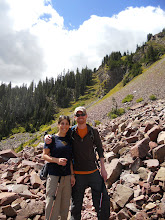The past couple weeks, I have been doing some reading on vocabulary instruction. I read a book by Robert Marzano called Building Academic Vocabulary and an article titled Direct and Rich Vocabulary Instruction. Below are my notes and some of the things that I took away from the readings.
To begin, in the article I read, it started out by stating that there are tiers to the kind of words that we use. Tier one words are basic words. Tier two words are high frequency words used for mature language. These words are often useful in understanding texts and they are words that have connections to other words/concepts. (These are the kinds of words that we should be teaching. ) The last tier of words is Tier three words which are infrequently used words typically found in high level content books.
It has been suggested that one of the best ways to teach vocabulary is through direct instruction. You can do this by using school materials, news stories, TV/Commericals, or simply using the book that you are reading in class. The whole goal here with teaching vocabulary is for comprehension to increase. By simply teaching definitions, this is not going to be what is in the best interest of the child.
Therefore, we want to provide rich, vocabulary instruction. The idea here is for the kids to use words in different situations and look at relationships with words. The example that was given was the word console. The teacher in this classroom provided a question such as, ‘Have you ever consoled someone?’
Some activities that are suggested for rich instruction is to use over head conversations. This is where 4 sentences are written out that are synonymous with the vocabulary words you are teaching. Then, the kids match the words to the dialogue. Another suggestion is using an example and a non-example.
It’s important for the teacher to use think-alouds but also have the students do think alouds. You can also have words re-appear. For example, if you taught the word hermit already and need to teach the word gregarious, you could ask, ‘is a hermit gregarious?’ Other ways to keep words in appearance is by having a journal of words learned and post this in your classroom. You could also have a word wizard chart. The kids get a reward for bringing in things from out of class where they saw the word being used.
In addition to the above article, I also read a book on vocabulary by Marzano. Below are my notes from the book that I read.
1. Provide a description, explanation, or example of a new term.
-Ask the kids what they think they know
-Use videos, powerpoint, brainpop, movies, advanced organizers, mazaine clippings
-Use pictures or images
-Use books
-This section is where only a general understanding of the term takes place
-Eventually, students go back to terms to terms introduced and add to their understanding, correct misconceptions, etc.
2. Ask students to restate the description, explanation, or example in their own words.
-They can’t copy what you say
-Help clear up confusions/errors as they work (you may need to provide additional explanations)
-Let kids work in small groups/partners
-Let kids who are struggling create linguistic representations
-Keep an academic notebook (buy flimsy binders and copy pg 19 to go into notebook)
3. Ask kids to construct pictures/symbol/graphic representation of the term
4. Engage students periodically in activities that help them add to their knowledge of terms in the notebook (spend about 15-20 mins per week on this)
-Kids may want to change their description of the word or their picture
-Kids may also use the extra space in the bottom to do the following:
-highlight prefix/suffixes to help remember
-identify synonyms/antonyms
-list related words
-write cautions or reminders of common confusions
Other activities:
-Free Association
-Comparing Terms
-Sentence Stems
-Venn Diagram
-Double Bubble
-Matrix
-Classifying terms
-Solving analogy problems
-Creating Metaphors
5. Think/Pair/ Share (spend about 15-20 mins per week on this)
-compare descriptions
-describe pictures to each other
6. Play games that relate to the term
-What is the question?
-Vocabulary charades
-Name that Category
-Draw me
-Talk a Mile a Minute
Saturday, April 3, 2010
Subscribe to:
Posts (Atom)
